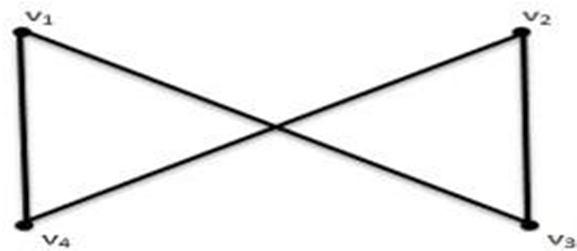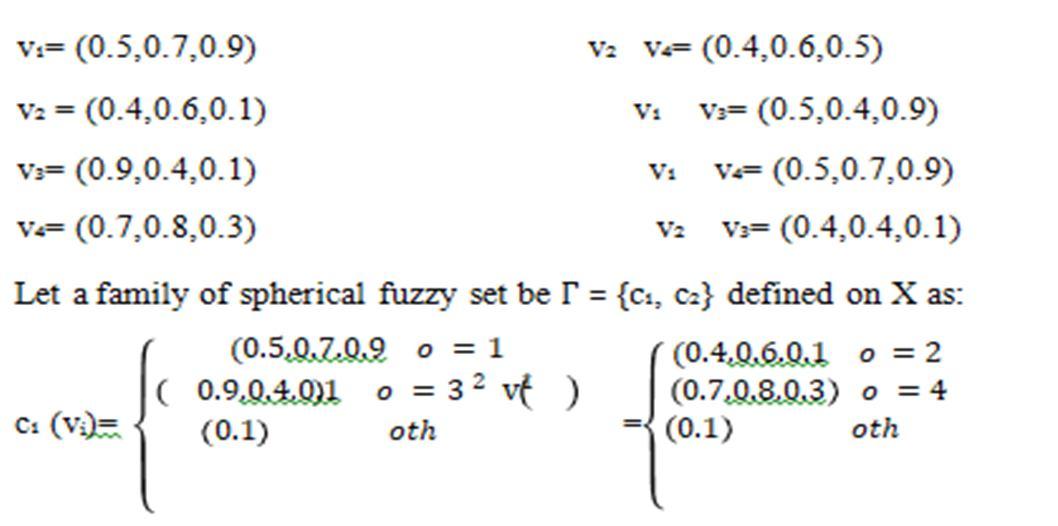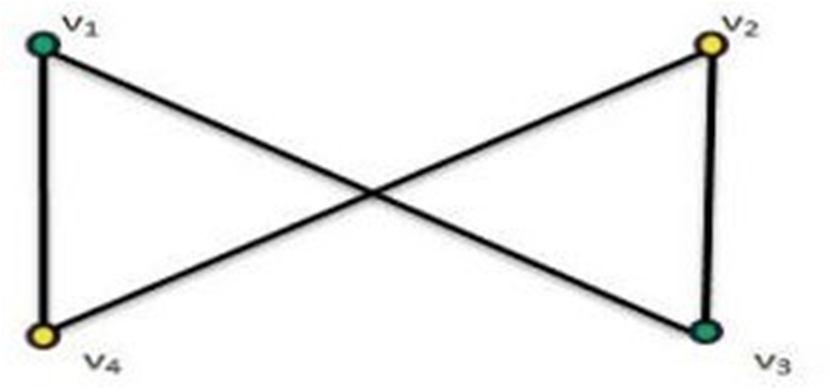
ISSN: 2321 9653; IC Value: 45.98; SJ Impact Factor: 7.538 Volume 10 Issue XI Nov 2022 Available at www.ijraset.com


ISSN: 2321 9653; IC Value: 45.98; SJ Impact Factor: 7.538 Volume 10 Issue XI Nov 2022 Available at www.ijraset.com
Kaviya. V1 , Ramya. M2
1M.SC Mathematics, Department of Mathematics, Dr.SNS Rajalakshmi Collegeof Arts and Science, Coimbatore, Tamil Nadu, India
2Assistant Professor, Department of Mathematics, Dr.SNS Rajalakshmi Collegeof Arts and Science, Coimbatore, Tamil Nadu, India

Abstracts: The applications of spherical fuzzy graphs are covered in this article. Real world issues are addressed with the spherical fuzzy graph. The purpose of the graph is to use spherical fuzzy vertex colouring to indicate the unintentional zone in the traffic flows. The applications, on the other hand, display information regarding the movement and intersection of the cars. In order to colour the nodes in a network that generates the chromatic number, this paper's goal is to highlight the intersection areas on road maps.
Keywords: Spherical fuzzy, Graph Theory, Fuzzy Graph, k-Vertex Coloring, Chromatic Number,Vertices, Traffic, Membership Values, Edge, Strong.
A branch of mathematics is called graph theory. Sylvester introduced the word "graph." Graphs are more than just bar and line graphs; they also include a pair of vertices and the edges that connect them. Numerous branches of science and technology employ graph theory.The concept of graph colouring is used in many contexts, including scheduling, aviation, traffic signals, etc. In the 18th century, Swiss mathematician Leonhard Euler introduced the fundamental concepts of graphs. It plays a significant part in a real life dilemma. L.A. Zadeh independently published his first work in fuzzy set in 1965. It is a helpful tool to describe circumstances where the data are ambiguous. The scenarios in which the items belong to a setare handled by fuzzy sets to some extent by their attributes. Only memberships were used when Zadeh invented the fuzzy set. Atanassov expanded on the research of fuzzy sets by introducing non memberships and intuitionist fuzzy sets in 1982. He also suggested applications in decision making, system theory, and other fields. Atanassov fuzzy set and Atanassov intuitionist fuzzy set are other names for intuitionist fuzzy set. Pythagorean fuzzy set is a fresh expansion of intuitionist fuzzy set (IFS) (PFS). Yager (2013) introduced the Pythagorean fuzzy set to deal with the complicated uncertainty. He then developed the idea ofan intervalued Pythagorean fuzzy set from the Pythagorean fuzzy set. Later, Smarandache developed the neutrosophic fuzzy set (NFS), which measures the degree of ambiguity (1995). It is a generalisation of the single valued neutrosophic set and the intuitionist fuzzy set. Introducing now the intuitive fuzzy set and fuzzy set's advanced tool. As an expansion of thePythagorean fuzzy set, Gundogdu (2018) and Kahraman initially proposed the spherical fuzzy set (SFS). It was a flexible model that addressed a variety of real world scenarios. Later, Rosenfeld's fuzzy graph from 1975 takes on this shape. Atanassov (1999) further developed fuzzy graph, which was an expansion of fuzzy set theory. Munoz et al. posed the question about the fuzzy graph's chromatic number first. Parvathi and Karunambigai (2006) give the definition of intuitionist fuzzy graph and its properties. The extended idea of Pythagorean fuzzy set to Pythagorean fuzzy graph was initiated by Muhammad Akram et.al (2019). (2019).The concept of spherical fuzzy graphs was introduced by Akram et al in 2020. The interval condition gives a truthness, falseness, and indeterminacy. Spherical fuzzy graphs are easier to utilise than image fuzzy graphs for a variety of real world circumstances. The four colour problem, which was the most well known and fascinating topic in graph theory, had its beginnings with Francis Guthrie (1852). Eslahchi and Onagh (2006) also developed the fuzzy graph's colouring. In Myna (2015), the use of fuzzy graphs in traffic was considered. In this paper, we simply touch on the use of spherical fuzzy vertex colouring for traffic control. This spherical fuzzy graph shows how traffic lights are used to direct vehicles and how they cross, with the unintentional zone denoted. We constructed the spherical fuzzy graph and coloured nodes using the motion of passing automobiles. Finding a graph's chromatic number, also known as the minimal colouring, serves as its conclusion. Additionally, utilising traffic flows, we gave a numerical example of a spherical fuzzy graph.
A pair of function σ: V → [0,1] and μ: V ×V → [0,1] make up a fuzzy graph called G = (σ,μ), where u, v∈ V exists for all μ (u, v) ≤ σ(u)˄ σ(v).

ISSN: 2321 9653; IC Value: 45.98; SJ Impact Factor: 7.538 Volume 10 Issue XI Nov 2022 Available at www.ijraset.com

A graph's k vertex colouring is the assignment of k colors 1, 2, ..., k to the graph's vertices.If no two clearly adjacent vertices have the same colour, the colouring is correct. The lowest k for which a graph G is kcolorable is known as the chromatic number F (G). K Chromatic: G is referred to as k chromatic if χ (G) = k.
A spherical fuzzy set V and a spherical fuzzy relation on V× V such that Tʙ (x, y) ≤ min (TA(x), TA(y)), Iʙ (x, y) ≤ min (IA (X), IA (Y)), Fʙ (x, y) ≤ max (FA (x), FA (y)) where Tʙ stands for the truth membership function, Iʙ for indeterminacy membership function, and Fʙ for falsity membership function, and each of these functions satisfies the following requirement: 0 ≤((Tʙ) ²+(Iʙ) ²+(Fʙ) ²) ≤1 d and where A is a spherical fuzzy vertex set and B is a spherical
4) Definition: 2.4[1]
If the family P = (α₁, α₂, …, αₖ) of the spherical fuzzy set A makes up the spherical fuzzygraph G = (A, B), it is referred to as having k vertex colouring.
1. max {αₙ (a)} = A, ⩝a ∈ A
2. min {αₙ, αₘ} = 0
3. strong edge ab of G, αₙ (T₁ (a)) ˄ αₙ (T₁ (b)) = 0, αₙ(I₁(a)) ˄ αₙ (I₁(b)) =0 and αₙ(F₁(a)) ˅αₙ(F₁(b)) =1, (1 ≤n≤k)
The minimum colors for G with k vertex coloring is denoted by χα (G), is called thechromatic number of the spherical fuzzy graph G.
5) Definition: 2.5[8]
An arc (x, y) of G is called α -strong if μ(xy)> CONNG (x, y) (x, y).
6) Definition: 2.6[8]
An arc (x, y) of G is called β-strong if μ (xy)= CONNG (x, y) (x, y).
7) Definition: 2.7[8]
An arc (x, y) of G is called δ -strong if μ (xy)< CONNG (x, y) (x, y).
8) Definition: 2.8[8]
If μ (x, y) > μ (u, v), where (u, v) is the weakest arc in the fuzzy graph, then an arc of G issaid to be δ * strong
9) Definition: 2.9[8]
An fuzzy graph G = (V, E, σ, μ) is called an α strong path if all its arcs are α strong pathstrong.

10) Definition: 2.10[8]
An fuzzygraph G = (V, E, σ, μ) is called a β strong path if all its arcs are β strong.
In this chapter, we've examined how spherical fuzzy graphs' traffic signals and graph behaviour interact. To deal with the heavy traffic flows, a road map is generated at random, and the nodes (vertices) are fixed where the traffic is stopped by red lights. When the yellow lights show, the traffic should be prepared to shift from the lane. The car began travelling toward its destination as soon as the green light was unlocked. Here, the connecting lines linkthe initial position and the final point (edges)
ISSN: 2321 9653; IC Value: 45.98; SJ Impact Factor: 7.538 Volume 10 Issue XI Nov 2022 Available at www.ijraset.com




This article uses a spherical fuzzy graph to depict a vehicle flow graph. We depicted a vehicleflow that encountered an accident at a traffic light system (Fig 4.1). Vehicles are referred to as vertices or nodes, and the path they take as they change directions is referred to as an edge.The directions are marked as A, B, C, and D. If there are no vehicles on the left sides in eitherdirection, then there is no intersection. When the signals are active, a collision between the vehicles occurs. This strategy is illustrated by the example below: Each arrow denotes a vehicle in motion. Vehicle density in each path is not always the same. The alternative traffic directions are depicted in figure 4.1, and the two left turns in that figure have less vehicles and do not impede traffic flow. Each vehicle flow represents the fuzzy spherical edge. In Fig. 4.1, A, B, and C were involved in an accident. In this scene, vehicles from A were travelling in the direction of path D, while those from B crossed over A. The intersection is caused by acollision between the three vertices, which is known as an unintentional zone. Figure 4 is used to calculate the chromatic number. 2. Because it intersects at one point, the vertices v₁ and v₂ are referred to be neighbouring.


ISSN: 2321 9653; IC Value: 45.98; SJ Impact Factor: 7.538 Volume 10 Issue XI Nov 2022 Available at www.ijraset.com

In other words, for two vertices to be considered adjacent, they must intersect.



This is why a spherical fuzzy set is used to handle traffic flows where the membership valueis dependent on the kind of vehicle. The membership values will alter in relation to the passing of vehicles.

VERTICES
ADJACENT VERTICES V₁ V₂, V₄ V₂ V₁, V₃ V₃ V₄, V₂ V₄ V₁, V₃
For instance, we decide on 5000 automobiles as the maximum and less than 2500 as the minimum. When 5000 vehicles are moving through the A to D lane at once, the lane is regarded as having high traffic. When 2500 vehicles are moving through the D to B lane, theflow is regarded as being medium, and when fewer than 2500 vehicles are moving through lane C, the flow is regarded as having low traffic. The membership value will change based on vehicles passing in the lane. Consider the spherical fuzzy graph G = (X, Y) with spherical fuzzy vertex set X= {V₁,V₂, V₃, V₄} and spherical fuzzy edge set Y= { xᵢ xⱼ /ij=15, 25, 14, 24}

ISSN: 2321 9653; IC Value: 45.98; SJ Impact Factor: 7.538 Volume 10 Issue XI Nov 2022 Available at www.ijraset.com
FIGURE 6: vertex Coloring of Spherical Fuzzy Graph
Therefore, the family Γ = {c₁, c₂} meets the requirement of the graph G's spherical fuzzyvertex colouring. Fuzzy's spherical chromatic number, χ (G), is therefore 2.


This article covered the use of spherical fuzzy graphs in traffic control applications. The vehicles are designated as membership values and as a graph vertex. Vehicle travelling in both non membership values and as an edge from one direction to another. Here, we merelycolour a spherical fuzzy graph's vertex edges and look at how nodes are coloured. The vertices that are known to be chromatic numbers are minimally coloured as a result of thisstudy.
Thank you to M. RAMYA, Assistant Professor in Department of Mathematics at Dr.SNSRajalakshmi College of Arts and Science who has supported this research.
[1] Rupkumar Mahapatra¹, Sovan Samanta ², and Madhumangal Pal, Edge Colouring of Neutrosophic Graphs and Its Application in Detection of Phishing Website, Published 8 July2022.
[2] V.N.Srinivasa Rao Repalle, Lateram Zawuga Hordofa, and Mamo Abebe Ashebo, Chromatic Polynomial of Intuitionistic Fuzzy Graphs Using (α, β) Levels, Published 28June 2022
[3] S. M. Sudha, K. Akalyadevi a), K. Preethi Sowndarya, Application of Spherical FuzzyGraph in Traffic, Cite as: AIP Conference Proceedings 2393, 020216 (2022); https://doi.org/10.1063/5.0074402 Published Online: 19 May 2022.

[4] Abdul.Muneera¹,Dr.T.Nageswara Rao², Dr.R.V.N.Srinivasa Rao³, Dr.J.Venkateswara Rao⁴,Application Of Fuzzy Graph Theory Portrayed In Various Fields.
Posted Date: March 19th , 2021.
[5] Wei Gao, Weifan Wang, Overview on Fuzzy Fractional Coloring, International Journal ofCognitive Computing in Engineering 2 (2021) 196 201.
